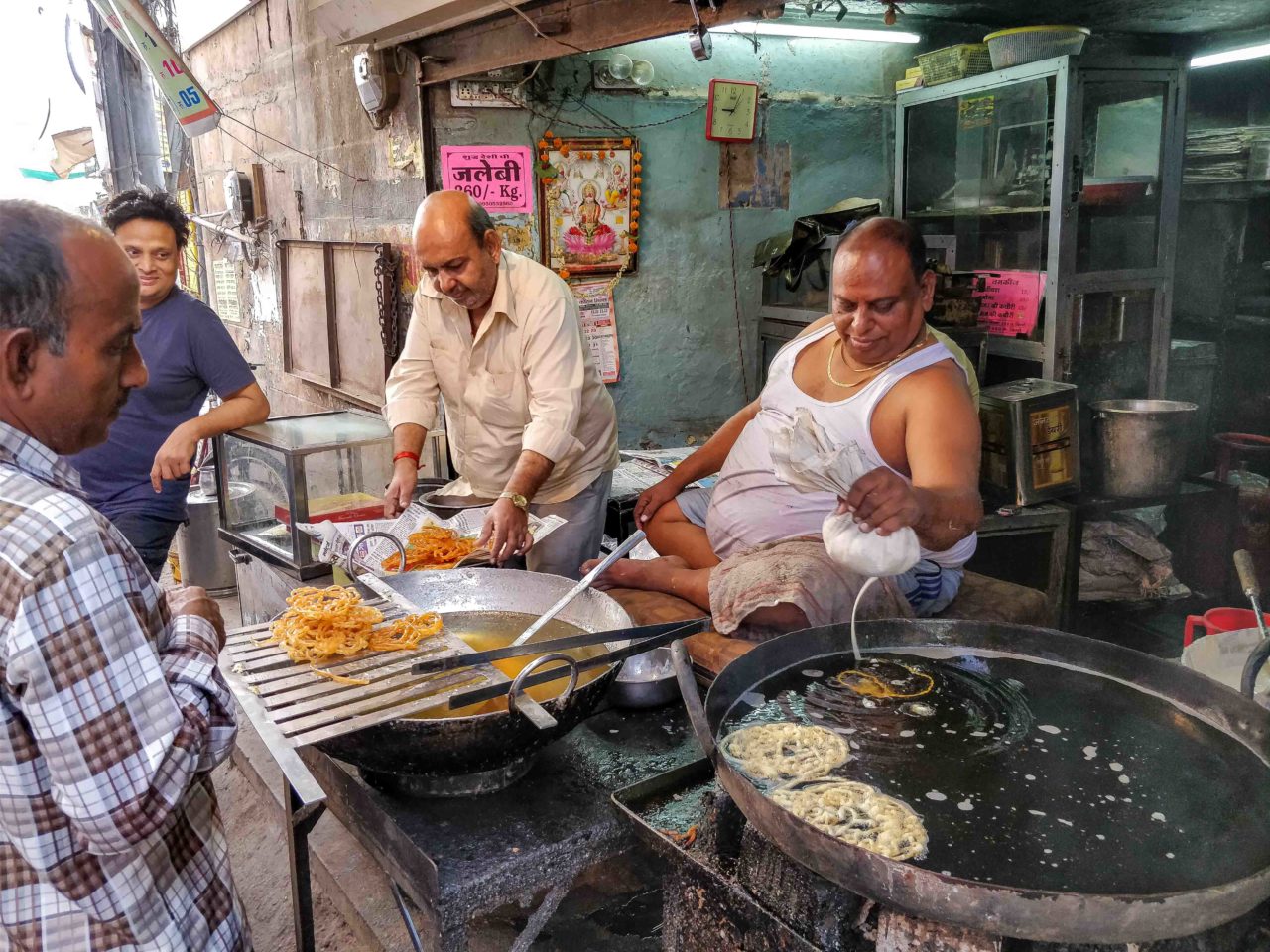
As light breaks over the mighty Mehrangarh Fort that towers 410 feet above the Blue City of Jodhpur, the city is already alive, hectic and heaving with street cleaners, tuk tuks, women stacking earthenware pots, food sellers frying up sticky Jalebi for the first workers on the streets, and omnipresent cows meandering from one garbage heap to the next. This is the medieval Jodhpur of today, founded by Rao Jodha in 1459, the fifteenth Rathore ruler of the princely state of the same name, and the capital of the kingdom of Marwar. Under the British it was one of the 19th princely states of Rajputana, and since 1940 has been known as Rajasthan, India’s largest state.
Jodhpur is studded with palaces and temples and set in the stark, dry landscape of the Thar Desert. The city was located on the important road linking Delhi to Gujarat and thus enabled it to profit from commerce in silk, copper, opium, sandals and dates. Much of the trade wealth is revealed in the staggeringly beautiful forts and palaces (Mahals and Havelis) dotted throughout the old town. Walking along the narrow laneways and alleys reveals a rich architectural and cultural heritage of the independent kingdom that flourished before, during and after the British Raj ruled it.
The state became a fief under the Mughal Empire, but enjoyed internal autonomy. Jodhpur benefited from this exposure to the outside world. New expressions of art and architecture made their appearance and opportunities opened up for local tradesmen to make their mark across northern India. At independence in 1947, the state merged into the union of India and Jodhpur became the second largest city of Rajasthan after Jaipur. Its merchants, the Marwaris, flourished and came to occupy a position of dominance in trade across the sub-continent.
Known as the Sun City for the stunningly bright and fine weather it enjoys year-round, it also is more famously known as the Blue City. Though there are no historical notes as to the reason why blue is the prominent color of homes and public buildings, there are many theories as to why. Blue has long been associated with Lord Shiva and thus is considered sacred. As the Brahmin caste are followers of Lord Shiva they adopted the color for auspicious reasons. Another reason is more practical: blue reflects heat and in this semi-arid landscape is an important means of keeping homes cool. The blue paint mixture contains limestone and copper sulphate which is a deterrent for termites that inhabit the ancient timber structures. Whatever the reason the textures and shades of blue blend harmoniously in the tangle of narrow, winding streets that never seem to lead to anywhere.
The cuisine of Jodhpur has its roots in the traditions of the Rajputs who were warring peoples in a vast, arid landscape. Their diet was influenced by being on the move and having a scarcity of water. Foods that did not have to be heated and could last for days were preferred. Game meat and dishes like laal maas (mutton curry prepared in a sauce of yoghurt and hot spices), safed maas (mutton based gravy with great texture derived from fresh cream, yogurt, and dried fruits), and khad khargosh (tender rabbit cooked in a spicy marinade) are still enjoyed throughout the region. Today more than 70 percent of Rajasthan is vegetarian so there is a wide variety of chutneys made of turmeric, garlic, mint and coriander. The vendors around Sardar Market sell every imaginable vegetable, spice and condiment for preparing mouth-watering Marwari dishes.
Not to be outdone are the spectacularly vibrant Rajasthani textiles which jump and pop against the monochrome of the desert backdrop. While the sky is a cloudless blue, women waft along from head to toe in crimson, emerald and gold saris, vibrant pink and orange being the navy blue of India here. So incredible are the textiles that collectors and buyers come far and wide to shop at the many specialty emporiums and boutiques that manufacture them locally. One such shop supplies the great fashion houses of Paris and New York, the ‘ends’ selling for a mere fraction of the fortunes charged abroad. Rajput and Mughal rulers of the 16th century celebrated and decorated themselves in sumptuous opulence and color as a sign of power and wealth. Today’s global demand in luxury apparel has put these timeless skills and impeccable craftsmanship back in vogue. The central Sardar Market is a great place to hunt for textile treasures as well as leather sandals, pottery, and unusual lacquered bangles.
Modern Jodhpur is a manageable place and stretches well beyond the six miles of thick city walls, but it’s the immediacy and tangible buzz of the Old City and the larger-than-life fort that capture one’s imagination.
Scented by incense, sweet shops, and ever-present open sewers, Jodhpur is a seductive anomaly of sound, smell and organized chaos, and it all seems to somehow work and thrive in an age-old tradition that repels and attracts simultaneously, in a magnificent spectacle of life.